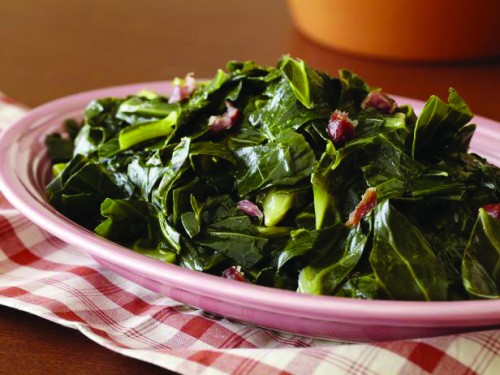5 Unusual, Yummy Veggies to Stir Up Your Cooking
In the day of foodie-educated, slow-food-100-mile-organic-sustainable -blogged-and-Instagramed everything, our familiarity with healthy eating and the goodness of fresh produce is certainly substantial, not to mention eons removed from the canned peas and green bean casseroles of decades past. Most of us have finally gotten over childhood traumas of mushy broccoli and heeded mom’s advice to […]
In the day of foodie-educated, slow-food-100-mile-organic-sustainable -blogged-and-Instagramed everything, our familiarity with healthy eating and the goodness of fresh produce is certainly substantial, not to mention eons removed from the canned peas and green bean casseroles of decades past. Most of us have finally gotten over childhood traumas of mushy broccoli and heeded mom’s advice to eat our vegetables. Beets? Yum. Garbanzo beans? Yes, please. Microgreens? Bring ‘em on! But while we may no longer fear fennel, edamame, or artichokes, there is still the occasional odd-looking thing in the produce aisle or ethnic market that we may steer clear of – or at least I know I do, not knowing how to approach it or often what it even is. Yet these strange veggies – many of which were well-loved in other parts of the world long before kale chips ever met Pinterest – need not be intimidating. With a bit of know-how, newly discovered produce can be a tasty way to break a meal rut and up the healthfulness factor. Snatch up one of these funky veggies on your next shopping excursion, and dive in.

1) Collard Greens
Most of us know our dark leafy greens like spinach, kale, and Swiss chard, but if you haven’t yet tried this long-standing soul food favorite, give hearty, flavorful collard greens a shot. Collards are sturdier and denser than many other greens, so they generally require a bit more liquid and longer cooking times to get mouth-meltingly tender; boiling, braising, and sautéing are all good techniques. The traditional Southern method is to braise a pot of collards with bacon, garlic and onion, but they’re also delicious in a wintry pot of thick greens-and-beans soup, stews, pastas, or even seasoned and crisped in the oven for a chip option.
2) Kohlrabi
Crunchy and slightly sweet with a peppery bite, the somewhat alien-looking kohlrabi is reminiscent of a cross between cabbage, broccoli stems, and radishes. I first encountered kohlrabi in Israel where it’s a salad staple, fantastic in a bright-tasting slaw with some apple, cilantro, and a yogurt-based dressing. It lends itself beautifully to pretty much any cooking method too – roasted to allow caramelized flavour to shine through; steamed; grated into fritters and pan-fried. Kohlrabi is also a natural fit with bold Indian spices, in a curry or sauté.
Rutabagas, which resemble an oversize turnip, are vastly underappreciated in the root vegetable world. Which is a shame, because underneath their plain exterior they’re sweet and creamy, turning a rich golden color when cooked. Try rutabaga in any dish you would use potatoes or yams: I like it mashed with sweet butter and lots of fresh cracked pepper (try it combined with sweet potatoes or carrots for more complex flavour) but it’s also fantastic cubed and roasted on its own or with other veggies. Pureed, rutabaga makes a great base for shepherd’s pies, casseroles, soups, and even pancakes.
4) Sunchokes
Also known as Jerusalem artichokes, these strange brown root-looking things are not related to artichokes at all, but are in fact the tuber of a sunflower plant. Sunchokes have a delicate, easily overpowered taste that doesn’t require a lot of seasoning. Peeled and chopped, they’re delicious roasted with olive oil and generous amounts of coarse salt, cooked and pureed for a side dish, blended into soup with leeks, shallots, and a splash of cream, or even shaved raw in a lightly-dressed salad.
5) Romanesco Broccoli
The bright green, geometric romanesco looks more like something out of a surrealist painting than a meal ingredient. But this funky Italian-native veggie – an edible flower, to be precise – is simply a relative of the cauliflower, and tastes like a milder, creamier version of cauliflower and broccoli. Romanesco holds up to a variety of cooking methods, and can be prepared much like its cruciferous cousins – lightly steamed, broken up into florets, seasoned and roasted, or sautéed in breadcrumbs for extra crunch. Regardless of preparation method, romanesco’s Italian roots call for a drizzle of good extra virgin olive oil and some fresh-grated Parmesan; to take it up a notch, throw in some chili flakes or try adding raisins or toasted pine nuts.
Feeling inspired yet? Next time you see something weird sticking out in the corner of the farmer’s market stall, conquer your fears, and go for it; copious amounts of wine served alongside will go a long way towards mediating any overly-adventurous culinary mishaps.
Kate Missine is a domestic diva, shopping addict, and worshiper of all things delicious. When she’s not chasing after her toddler son, Kate can be found stirring things up in the kitchen, scouring grocery aisles for strange ingredients, or indulging in much-needed retail therapy. She holds a B.A. in Communications and Publishing and accepts pastries and shoes as currency.
By Kate Missine







